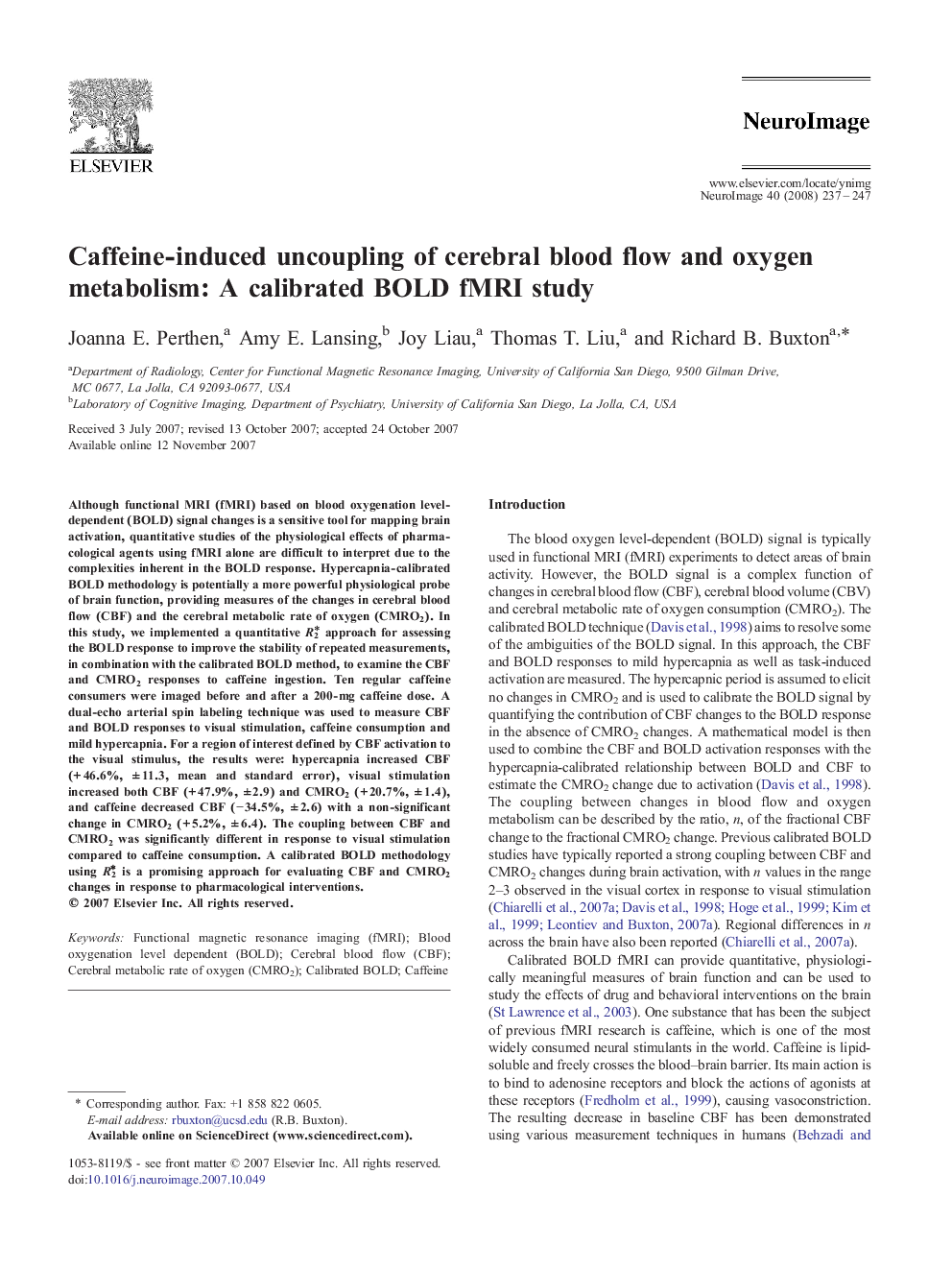| کد مقاله | کد نشریه | سال انتشار | مقاله انگلیسی | نسخه تمام متن |
|---|---|---|---|---|
| 3073232 | 1188827 | 2008 | 11 صفحه PDF | دانلود رایگان |

Although functional MRI (fMRI) based on blood oxygenation level-dependent (BOLD) signal changes is a sensitive tool for mapping brain activation, quantitative studies of the physiological effects of pharmacological agents using fMRI alone are difficult to interpret due to the complexities inherent in the BOLD response. Hypercapnia-calibrated BOLD methodology is potentially a more powerful physiological probe of brain function, providing measures of the changes in cerebral blood flow (CBF) and the cerebral metabolic rate of oxygen (CMRO2). In this study, we implemented a quantitative R2* approach for assessing the BOLD response to improve the stability of repeated measurements, in combination with the calibrated BOLD method, to examine the CBF and CMRO2 responses to caffeine ingestion. Ten regular caffeine consumers were imaged before and after a 200-mg caffeine dose. A dual-echo arterial spin labeling technique was used to measure CBF and BOLD responses to visual stimulation, caffeine consumption and mild hypercapnia. For a region of interest defined by CBF activation to the visual stimulus, the results were: hypercapnia increased CBF (+ 46.6%, ± 11.3, mean and standard error), visual stimulation increased both CBF (+ 47.9%, ± 2.9) and CMRO2 (+ 20.7%, ± 1.4), and caffeine decreased CBF (− 34.5%, ± 2.6) with a non-significant change in CMRO2 (+ 5.2%, ± 6.4). The coupling between CBF and CMRO2 was significantly different in response to visual stimulation compared to caffeine consumption. A calibrated BOLD methodology using R2∗ is a promising approach for evaluating CBF and CMRO2 changes in response to pharmacological interventions.
Journal: NeuroImage - Volume 40, Issue 1, 1 March 2008, Pages 237–247